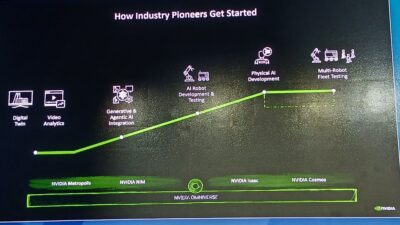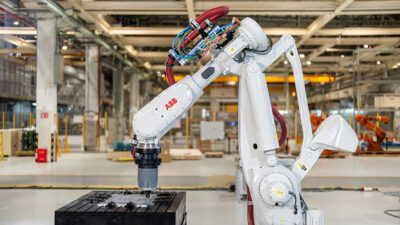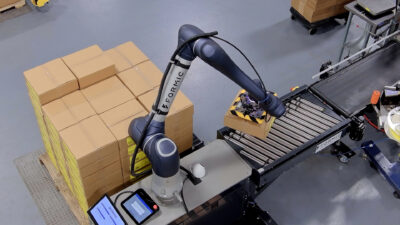Collaborative robots are being used in applications throughout the supply chain, from materials handling to assembly to order fulfillment and can even be used for processing returns and performing quality control checks.

Distribution center managers are struggling to fill open positions and retain current employees. Fortunately, collaborative robots are being used in applications throughout the supply chain, from materials handling to assembly to order fulfillment. Collaborative robots can even be used for processing returns and performing quality control checks.
Modern collaborative robots are easier to implement because programming has never been simpler. Simulation software and industrial networking also let facilities better plan and integrate robotics with their existing systems. Ease of use also makes collaborative robots attractive to supply chain businesses by lowering their total cost of ownership.
Collaborative robots are now being used in e-commerce to improve delivery times. Same-day delivery, even delivery in a few hours is now achievable, thanks to collaborative robots. Distribution centers use artificial intelligence to help predict demand and be ready.
In order to fulfill quick delivery expectations, items can be prepackaged and ready to ship. But if orders are overestimated, the supply chain now has to deal with the resulting inefficiency. The best method is just-in-time fulfillment, but that’s hard to scale with manual labor. But collaborative robots empower a distribution center to scale based on demand, simply deploying the use of more collaborative robots whenever they’re needed. This lets the supply chain scale based on demand.
Collaborative robots can move
Today’s mobile collaborative robots add intelligence, guidance, and sensory awareness. They’re capable of independent, self-navigation and can work right alongside human workers. Collaborative robots can communicate with each other to collect shipping containers and deliver them to picking stations.
Mobile collaborative robot solutions are easier to scale than traditional equipment, such as conveyor belts. These systems require less dedicated warehouse space and can be used to store product. To reduce the time required to fulfill orders, smaller warehouse facilities can be used so the collaborative robot has less square footage to navigate to complete each order.
Collaborative robots handle tasks efficiently
Goods-to-person order fulfillment involves having product moved directly to an operator who can pick what is needed to fill orders. Collaborative robot automation solutions are ideal for ergonomics, are scalable, and use less space. Goods-to-robot picking uses 2-D, 2.5-D, or 3-D vision along with end-of-arm tooling (EOAT) to create picking solutions. The robot more efficiently identifies and picks items than humans performing the same tasks.
At many distribution centers, picked products are inspected and quality checked before packaging and shipping. Weight check and vision systems can automate these processes. Collaborative robots examine a percentage of the packages passing by on a conveyor. They scan a barcode or take an image of products to ensure accuracy and verify orders.
Product returns account for a high amount of a distribution center’s labor. Collaborative robots have the ability to unload containers of returned product and load items onto a conveyor. The conveyor uses vision technology to sort the products. Having collaborative robots perform these tasks reduces labor hours and staff required.
Collaborative robots offer many advantages to streamline processes throughout the supply chain, facilitating faster, more responsive and easily tracked stocking, fulfillment and returns.
This article originally appeared on the Robotics Online Blog. Robotic Industries Association (RIA) is a part of the Association for Advancing Automation (A3), a CFE Media content partner.



